The insights and investment methods of former Goldman Sachs executive Raoul Pal: How to get rich in the crypto field without luck?

Reprinted from panewslab
05/10/2025·15DCompiled by: KarenZ, Foresight News
Raoul Pal, a former Goldman Sachs executive and author of Global Macro Investors and the founder of Real Vision, is well-known for successfully predicting the 2008 financial crisis. Recently, in a conversation with "When Shift Happens" and a speech at Sui Basecamp in Dubai, Raoul Pal deeply analyzed how to accumulate wealth steadily in the cryptocurrency field, and discussed topics such as Bitcoin, Ethereum, Meme, AI, NFT, Sui ecosystem, Strategy Bitcoin strategy, investment strategies, macro trends, and market trends.
Raoul Pal Conversation When Shift Happens Featured Output:
1. How to get rich without luck in Crypto?
How to get rich through Crypto without luck? Just buy Bitcoin and adopt the DCA (Average Cost Method) strategy.
Novice are often prone to falling into the trap of pursuing getting rich quickly, and this mentality is actually full of dangers.
When you start to envy others for 100 times your gains, you have already stepped into a dangerous area. Once you lose your mind and greed are at work, it is very easy to mess up your investment.
The Crypto field is full of many risks, such as DeFi attacks, wallet theft, etc., which requires investors to be vigilant and rational.
2. About Meme
Speaking of Meme coins, Raoul Pal said that he does not hold Fartcoin, but holds SCF (Smoking Chicken Fish) and DODE. Although SCF fell 90%, it is currently showing a good rebound. He specifically reminded investors that no matter whether they hold Meme coins such as Fartcoin, WIF or BONK, they must not make them account for an excessive proportion of their portfolios, because such coins have a high 85% chance of returning to zero. He was even surprised that LUNA had not evolved into Meme coins, and originally thought people would buy it wildly.
3. Stay away from market panic and return to value investment
If investors are panicked about the market, Pal recommends that you might as well return to life with peace of mind and stay away from the trading screen. Those 5-minute K-line charts and 1-hour K-line charts actually have no substantial help in investment decisions.
Many people fantasize that they can become successful traders and earn 100 times the return, but the reality is that the investors who can really accumulate wealth in this field are those who insist on buying and holding for a long time.
4. Beware of Crypto Yield risks
Regarding Crypto Yield, for example, the way of obtaining profits through pledges also has risks. For ordinary investors, when faced with an opportunity that seems to bring 20% returns, they must be aware of the risks behind them.
5. How do you view Michael Saylor’s Bitcoin purchasing strategy?
Strategy's Bitcoin strategy is creating leverage in the system. Strategy buys Bitcoin by issuing convertible bonds, an act essentially selling options at a lower cost. After these options are bought by arbitrage players (option traders), they will hedge them on the exchange to deal with the risk of Bitcoin price fluctuations and MicroStrategy stock options.
At the same time, arbitrageurs will also use the ratio fluctuations between MicroStrategy's NAV and Bitcoin price to arbitrage, and use market tools such as the price difference between perpetual contracts and spots, and the price difference between futures and spots.
Currently, most of the buyers of Strategy convertible bonds are TradFi hedge funds and other institutions. Sovereign wealth funds like Norwegian Bank may only value the Bitcoin elements, while large hedge funds such as Citadel, Millennium, and Point72 are also making arbitrage. These institutions have rich experience in risk management and may receive systematic support, with reasonable position size control and are not prone to explosive positions.
In sharp contrast, traders who overuse high leverage face huge risks, and cases of transaction failures due to excessive leverage are common in the market.
6. Capital allocation of Raoul Pal
Regarding capital allocation, Raoul Pal said that Sui accounts for 70%, which is now far beyond Solana. Sui's adoption and developer activities performed well. In addition, he also owns some DEEP (DeepBook), which is the liquidity layer protocol in the Sui ecosystem.
7. The value and potential of NFT
NFT, an innovative technology that can permanently store and trade non-transferable assets, Pal is looking forward to its prospects. From a macro perspective, the current Crypto industry is $3 trillion. Assuming that it grows to $100 trillion in the next 10 years, it will create a huge wealth of $97 trillion; even if it is conservatively estimated to reach $50 trillion, it will generate a wealth increase of $47 trillion.
These wealth will flow to different people. Art is the upstream of everything, and digital art, as an emerging field, is expected to become an important place for wealth. In the field of digital art, we have XCOPY and Beeple, which later gave birth to the generative art movement. I spent a lot of time talking to some very famous people who are interested in this field. After earning enough money by encrypting OG, I have a strong desire to collect artworks. For example, CryptoPunk symbolizes your identity and can allow you to meet a group of like-minded people. From institutions to super rich people to ordinary people, they are gradually beginning to realize the importance of digital art. We are still in our early stages. I hold many works of art, and I think it's a time span that spans over 10 years.
8. The advantages and prospects of Ethereum
Regarding Ethereum, Ethereum's network capacity has exceeded the current system requirements, and some mechanisms may be adjusted in the future to return to Layer1. EVM is like Microsoft, with many banks, insurance companies and large enterprises in the world relying on Microsoft, not Apple or Google.
Once you have a corporate sales model, it is almost impossible to remove it from the company because you don’t want to change it, don’t want to take risks. Judging from the Lindi effect (the longer some things have existed, the higher the possibility that they will continue to exist in the future)), Ethereum has been tested by time and can meet the needs of the financial market well. Will Goldman Sachs and JPMorgan Chase build on Solana? Not likely. Ethereum may bring a new narrative to the market and is expected to outperform Bitcoin in the short term. Looking ahead to the next five years, its importance will become increasingly prominent unless they mess up everything.
The concepts of Bitcoin Lightning Network, payment, etc. have limited effect on price increase. The core value of Bitcoin lies in its use as a means of value storage; the same thing will also happen to ETH.
9. About AI
AI is developing rapidly, and its performance has exceeded 99% of analysts. Pal thought deeply and believed that the rise of AI has raised profound questions about consciousness and the future role of human beings. He advises people to actively participate, understand deeply and use AI technology.
Secondly, we don’t know what this means for employment, how we create wealth, etc., but I know, what is human beings best at? What are some things that humans can do but AI can’t do? That is to be human.
I developed an AI Raoul, which can read news every day. The news is also written by AI. At the same time, it also builds a chatbot based on its own voice training. The training data covers all its X content, YouTube content, and 100 books. Today, Real Vision users can communicate with the chatbot. Pal predicts that the two technologies will be integrated soon, and this change will have a profound impact on the podcast and media industries, and the media content that everyone will be exposed to in the future will have a unique personality. Moreover, human memory and words and deeds may eventually become the "nutrition" of AI and achieve "eternal life" in a sense.
10. Market attention and high-quality project selection
This is an attention game. People's attention to key tokens is dispersed, and the duration of many narratives is relatively short. Pal stressed that holding Bitcoin is always a smart choice, and buying Solana at the bottom of the cycle and buying SUI last year is also a good strategy.
Investors should focus on the top 10 or top 20 tokens, focusing on projects that can continuously improve network adoption, which often have higher investment value. According to Metcalf's law, the project potential can be evaluated from the aspects of the number of active users, the total transaction value, and the user value.
There are many users of the Bitcoin network and sovereign states participate in the purchase, which is why Bitcoin is more valuable; Ethereum has a huge user base and a wealth of applications, and although the emergence of L2 makes the situation slightly complicated, it still has significant value. Investors should actively look for projects with the number of users and value applications. For example, when Solana is at the bottom of the cycle, the developer community continues to grow and the number of users remains stable. The emergence of Bonk further strengthens the market's confidence in Solana (Note: The host said that in the previous conversation with toly, toly mentioned that Mad Lads was the turning point for Solana); the same is true for Sui.
The best of Raoul Pal’s speech at Sui Basecamp Dubai
1. Macro core factors: liquidity and currency depreciation. Cryptocurrencies and the economy are showing a four-year cycle, and the root cause is driven by the debt refinancing cycle. Since the global debt was high in 2008, we have been maintaining the economy by borrowing new and paying back the old.
2. Population aging and economic growth: Population aging has led to a slowdown in economic growth. In order to maintain GDP growth, more debt support is needed. This phenomenon is common in many parts of the world, and this dynamic can be clearly seen through the correlation chart of debt and GDP.
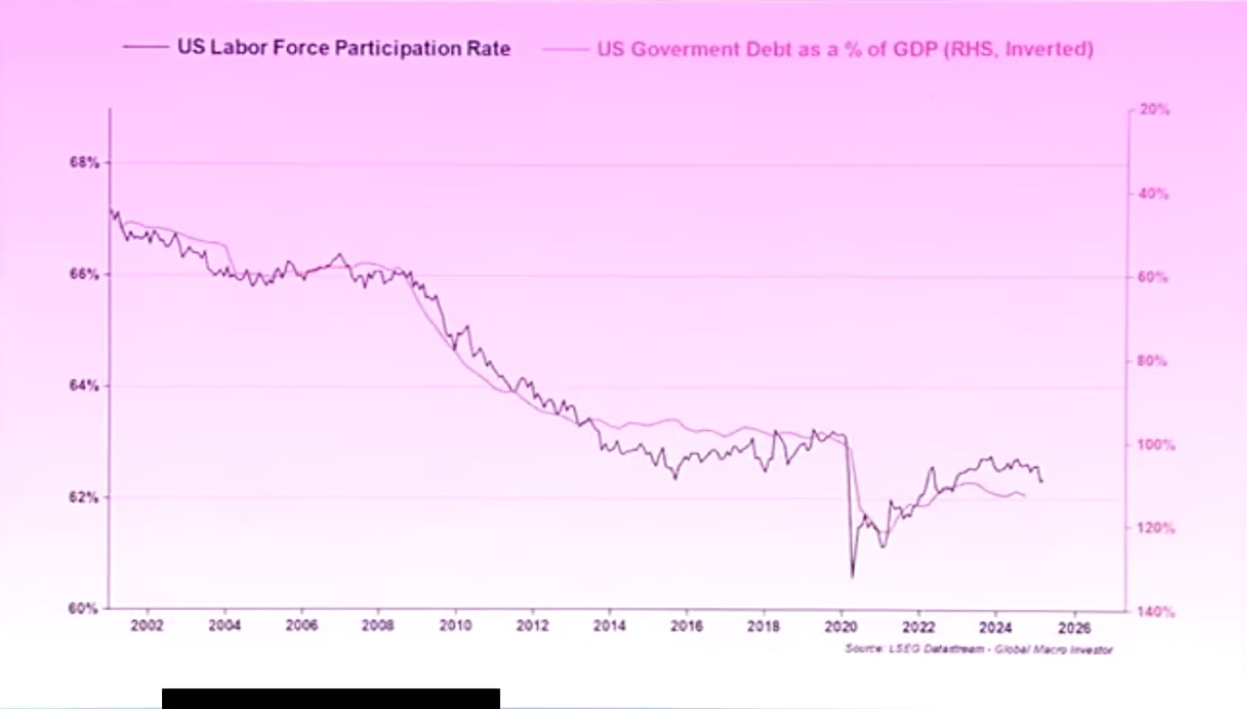
3. Liquidity drives everything: Fed net liquidity is the core indicator. In 2009 - 2014, it mainly relied on balance sheet expansion to provide liquidity, and then new tools such as bank reserve adjustment were added. At the moment, total liquidity (including M2) is crucial, and it has amazing explanatory power to move with Bitcoin (90% correlation) and Nasdaq (97% correlation).
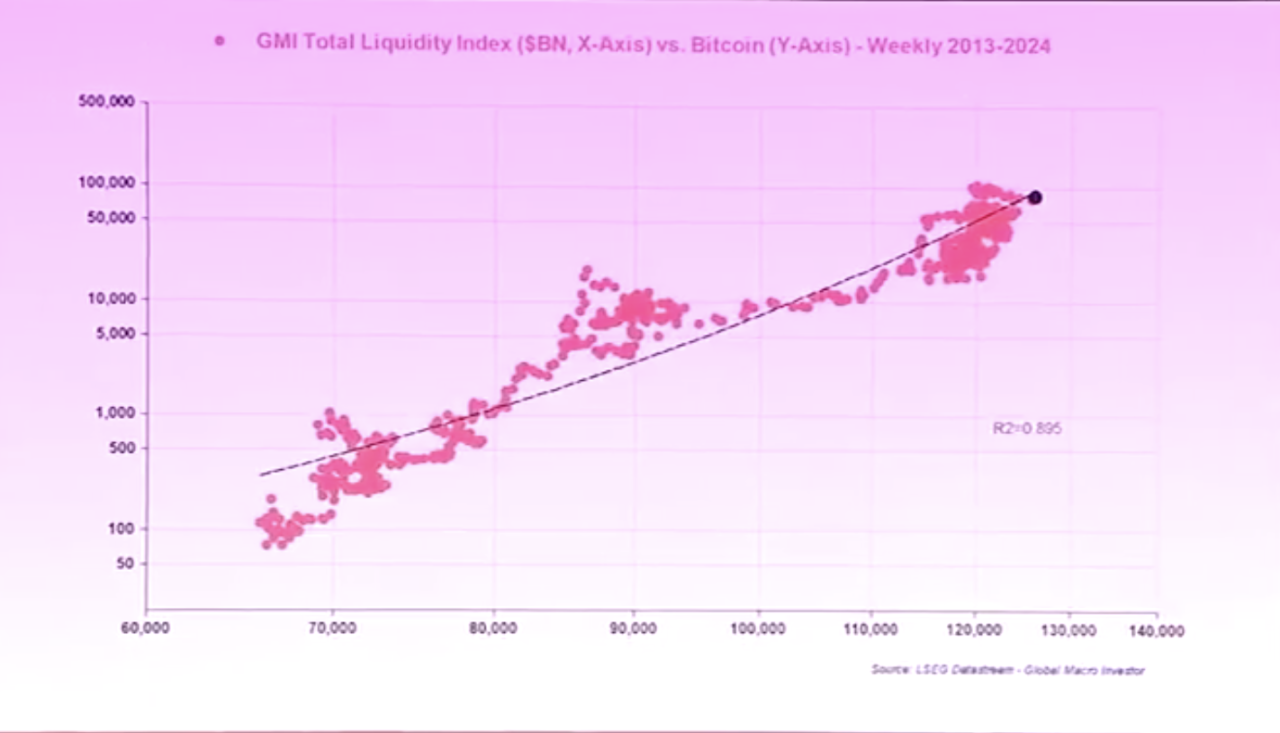
4. Currency depreciation mechanism: Currency depreciation is equivalent to a global tax. The global annual implicit inflation tax of 8% plus 3% explicit inflation means that you need an annual return of 11% to maintain your wealth without shrinking. This explains why young people are influx into the crypto space—traditional assets (real estate, stocks, etc.) are inadequate returns, and they are forced to choose high-risk assets to seek excess returns.
5. The gap between the rich and the poor and the encryption opportunities: The rich hold scarce assets, while the poor rely on labor income (the purchasing power decreases year by year). The encryption system has subverted this pattern - young people seek breakthroughs through high-risk assets.
6. Performance of crypto assets: annualized by 130% since 2012 (including three major pullbacks), Ethereum 113%, and Solana 142%. Bitcoin has accumulated a 2.75 million-fold increase, which is extremely rare in the investment field. Crypto assets are gradually becoming a "super black hole" that attracts funds.
7. Sui ecosystem has great potential. DEEP (DeepBook Liquidity Layer Protocol) has performed best recently. The SOL/SUI ratio shows that SUI is relatively strong.
8. Analysis of current market misjudgment: People often use liquidity conditions three months ago to interpret current market narratives (such as tariff panic), but there is a deviation. In fact, the tightening of financial conditions in the fourth quarter of 2024 (rise in US dollar interest rates and rise in oil prices) produced a three-month lag effect. The Economic Surprise Index (Comparison of the United States and Globally) shows that the current economic weakness is only a temporary phenomenon. Looking back at the Trump tariff cycle in 2017, the US dollar rose first and then fell, and then liquidity drove asset prices to rise sharply.
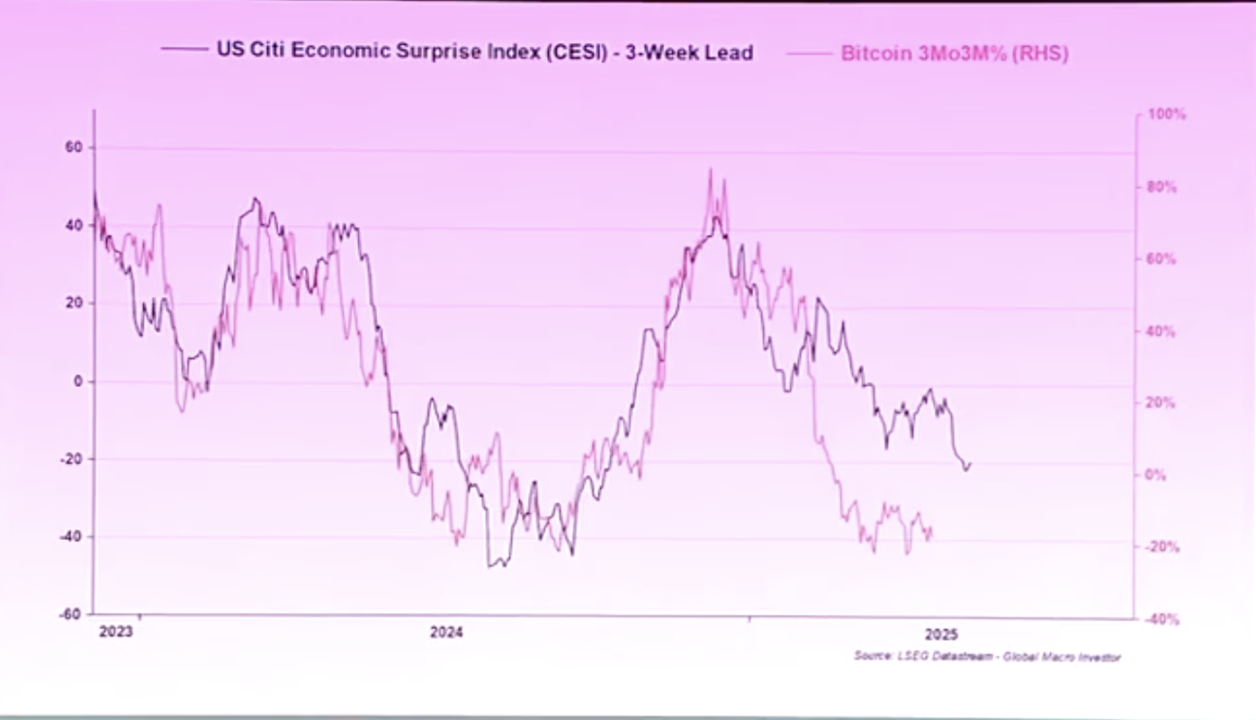
9. Global M2 and asset relationship : When global M2 hits a new high, asset prices should rise simultaneously. Taking Bitcoin as an example, its price trend usually shows a breakthrough, a retracement, and then accelerates its rise in the "banana zone". Compared with the 2017 cycle, Bitcoin rose 23 times that year. Although the current market is different, it is expected to still have considerable increases. The market is currently in the correction stage after the first part of the "Banana Zone" breaks through and is about to enter the second part. Usually, this stage will usher in the altcoin market.
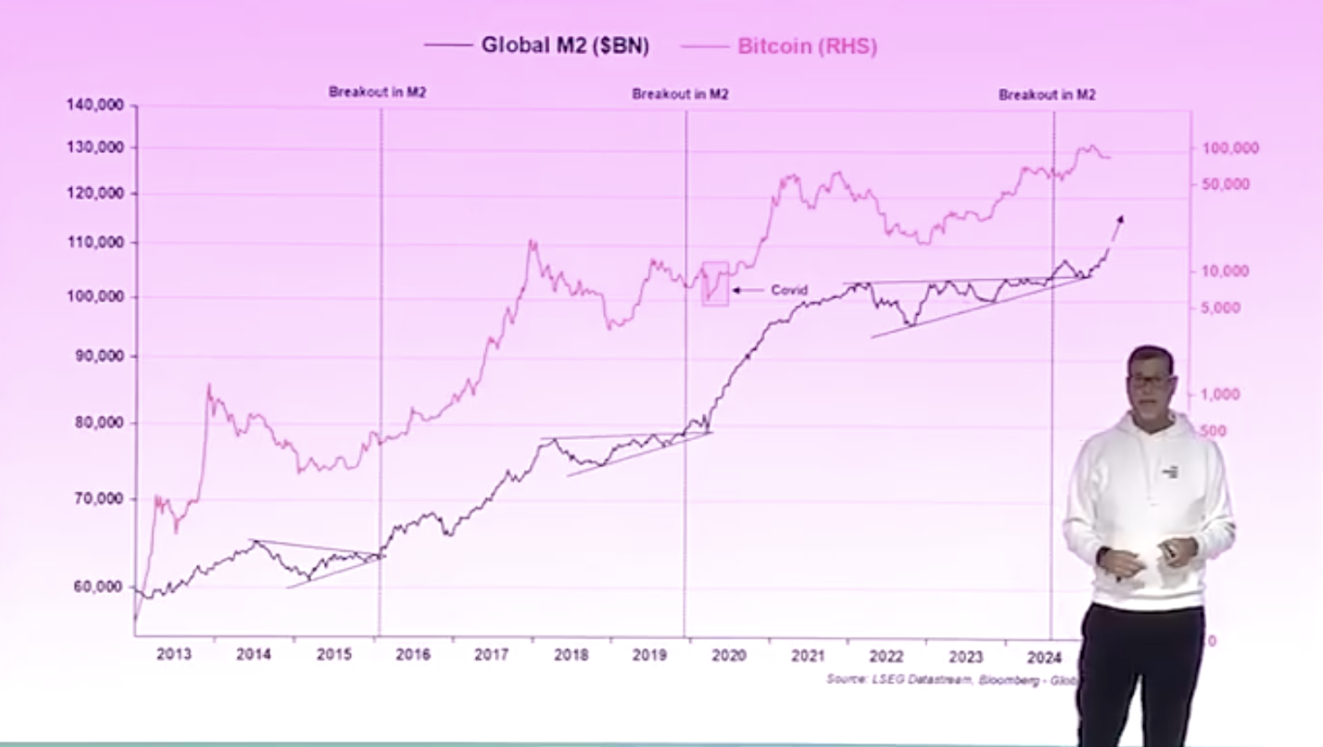
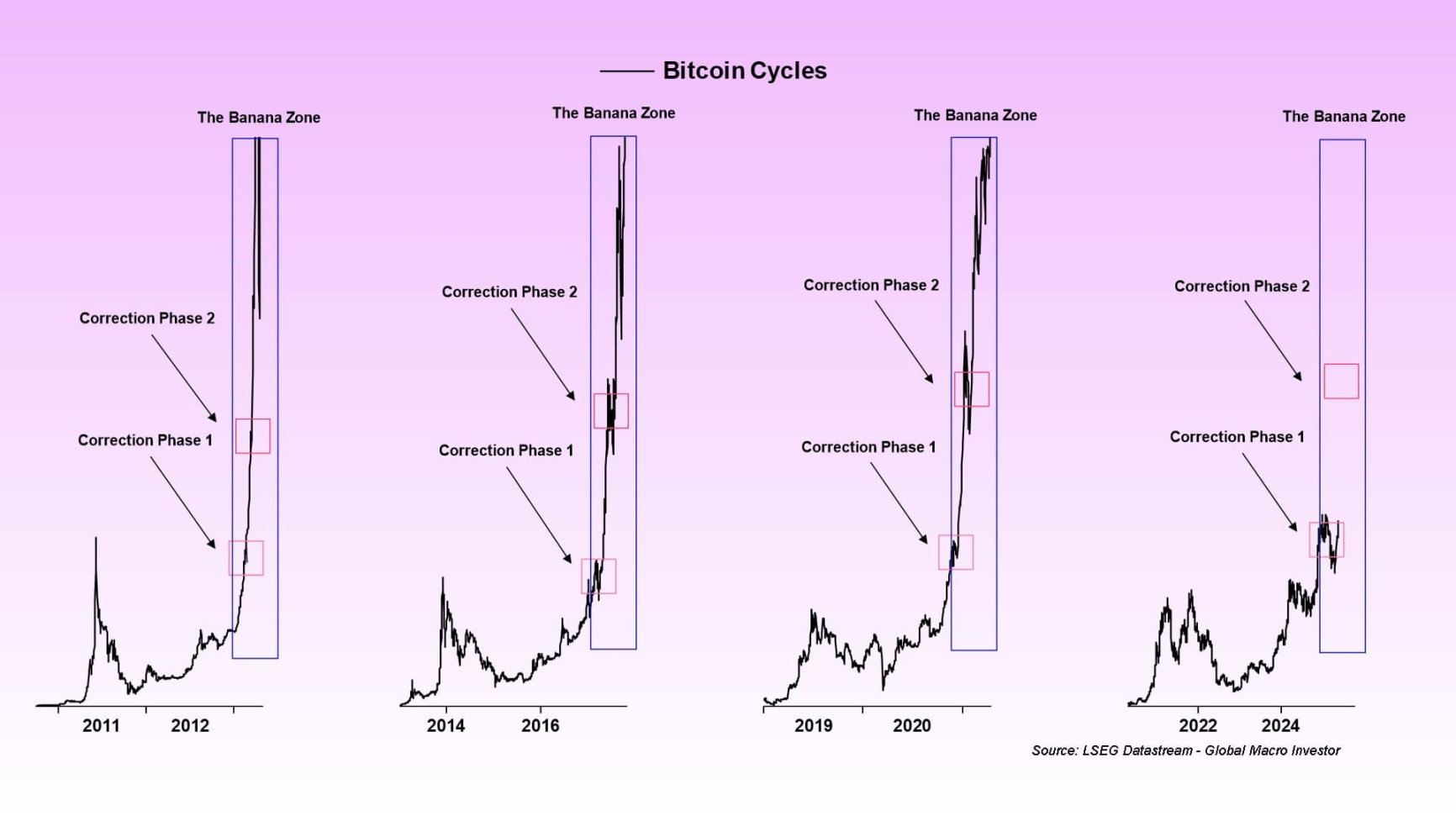
10. Business cycle and Bitcoin trend: The ISM Manufacturing Index is an important forward-looking indicator. When the index breaks through 50, it indicates the return of economic growth, increase in corporate returns, and active capital investment, and the price of Bitcoin will accelerate. If the ISM index reaches 57, the price of Bitcoin may even reach $450,000. The business cycle has rebounded, and the increase in household cash has led to an increase in risk appetite. At this time, the investment logic of altcoins is similar to junk bonds and small-cap stocks.
Note: Raoul Pal is also a member of the Sui Foundation Board of Directors.



 chaincatcher
chaincatcher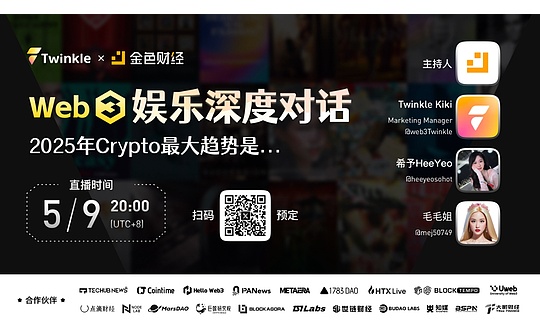
 jinse
jinse